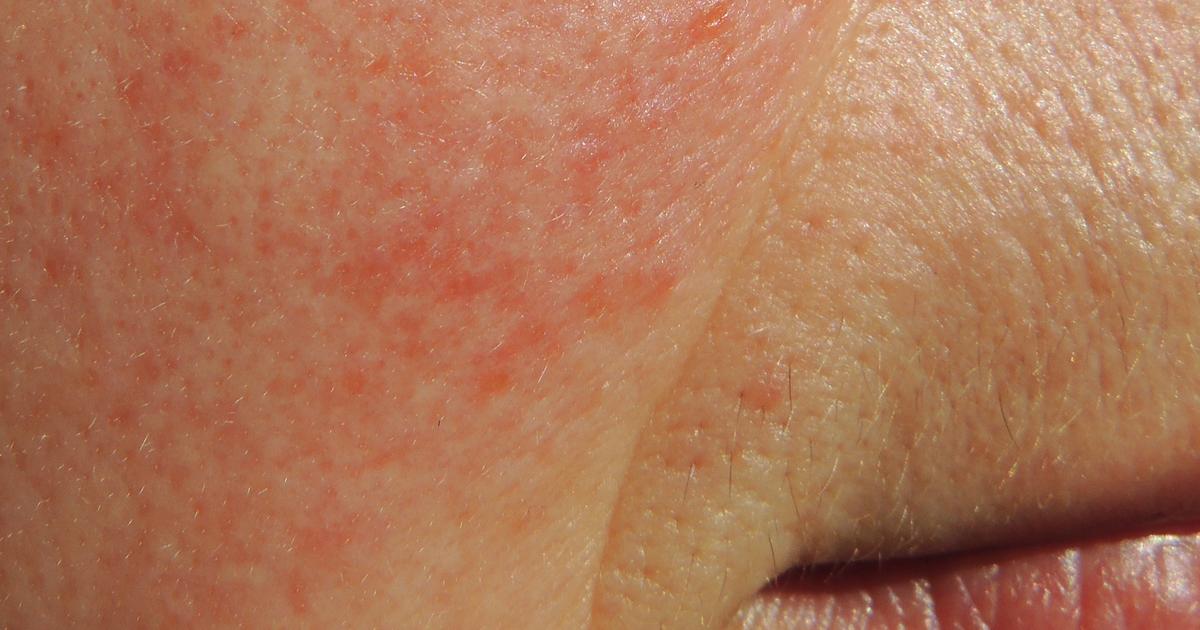What Causes Broken Blood Vessels On The Face?
Broken facial blood vessels occur when the blood vessels on the face become enlarged. These vessels, located just underneath the skin's surface, create red and web-shaped patterns, which is why these broken blood vessels are often called spider veins. Most individuals have spider veins on their legs or face, but it is possible to develop them on any part of the body. Spider veins aren't dangerous and don't cause any health symptoms beyond their appearance. There are several potential causes of the condition. In the vast majority of cases, individuals can treat the appearance of broken blood vessels at home. They shouldn't need to see a doctor unless they're experiencing pain or concerned about the overall health of their cardiovascular system.
Learn about what can cause broken blood vessels on the face now.
Hard Sneezing or Vomiting

It may surprise some individuals to find hard sneezing or vomiting might be the cause of broken blood vessels on their face. The reason these things cause broken blood vessels is because of how they cause a sudden and extreme change in pressure. As individuals sneeze, the amount of pressure on their face changes rapidly, which can make their blood vessels become enlarged due to the sudden push of blood against them. Vomit has the same effect on the face, and it may also have a similar effect on the pressure in other parts of the body. Any other sudden, involuntary, violent movement has the potential to change the body's pressure and cause spider veins to develop. On top of this, some individuals might also develop spider veins as a result of drastic changes in the weather. If the air pressure outside undergoes severe changes as a storm rolls through, the body's circulation might be affected, and the skin of the face might become flushed with blood. This excess amount of blood leads the vessels to burst and cause spider veins.
Read more about what can increase the risk of broken blood vessels on the face now.
Genetics

Certain individuals are more likely than others to develop broken blood vessels on their face. Specifically, those who have a family history of it are more at risk. An individual's cardiovascular system shares many genetic traits with that of their family. There may be certain genes that increase the chances of facial blood vessels bursting, or of the face becoming suffused with blood at different times. Studies have indicated up to ninety percent of individuals with broken blood vessels on their face also have a family history of the condition. There haven't been many studies into exactly what genetic component causes these vessels to develop. It's unclear whether it has to do with the blood vessel walls, the way blood moves through the body, or the way blood can pool in the face and other portions of the body. Regardless, if an individual's parents or other close relatives have them, they can be fairly sure they're also genetically predisposed toward them. Some steps can be taken to prevent them, but there's no way to guarantee they'll never develop.
Discover additional causes of broken blood vessels on the face now.
Sun Exposure

Sun exposure can have a marked effect on broken blood vessels on the face. Specifically, it can either cause them to appear or make existing broken vessels more prominent. When the skin becomes sun damaged, the blood vessels become enlarged, which can lead to a spider vein-like appearance. The vessels are also drawn closer to the surface of the skin, making their enlargement easier to see. Sun damage is caused by the ultraviolet light the sun's rays give off. The UV rays are a type of radiation that causes skin damage. The most obvious form of sun damage is a sunburn, which can range from pink to deep red and painful. However, there are other ways the sun can damage skin as well. Prolonged exposure without sunscreen can cause individuals to develop dark spots, wrinkles, and other issues, even if their skin has never technically looked burned. In addition, sunshine can dry out skin, so it's important to moisturize after a day out at the beach.
Keep reading to uncover more causes of broken blood vessels on the face now.
Rosacea

Rosacea is one of the most common skin conditions in the world. It causes the skin to look red and flushed because the veins underneath are enlarged. Though rosacea can occur in anyone, it's more visible on individuals with pale skin. Most rosacea patients also experience broken blood vessels of some kind, whether those are on their face or some other part of their body. Unlike the broken vessels themselves, rosacea does cause symptoms. It's a chronic and inflammatory skin condition that tends to affect the face most frequently. If the condition isn't treated, it will get worse over time. The most common rosacea symptom is developing facial pustules. Researchers estimate about fourteen million individuals in the United States have the condition. Rosacea patients often have inflamed blood vessels and blush very easily and visibly. Some symptoms are worsened by foods like spicy meals and dairy products. Researchers don't yet have a full understanding of the cause, and there isn't a cure. However, there are multiple ways to get symptom relief.
Read more about the various causes of broken blood vessels on the face now.
Injuries

Injuries can lead to broken blood vessels anywhere in the body, but they're particularly likely to break blood vessels in the face. When this is the case, the injured blood vessels tend to be located underneath or around the bruise caused by the injury. Rather than being a permanent fixture, broken vessels caused by injury tend to heal as the bruise does. The amount of time this takes depends on how serious and deep the bruise is. Any impact to the face has the potential to cause bruising and blood vessel bursting. Many athletes experience facial impacts during sporting events, particularly ones who participate in sports like boxing. The injury might also be the result of unexpected trauma, like individuals hitting their head on the steering wheel of their car during a car accident. If individuals have sustained a head injury, they should always be on the lookout for signs of a concussion and seek medical help if need be.